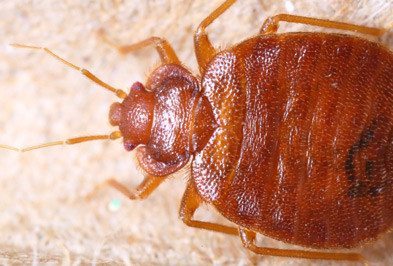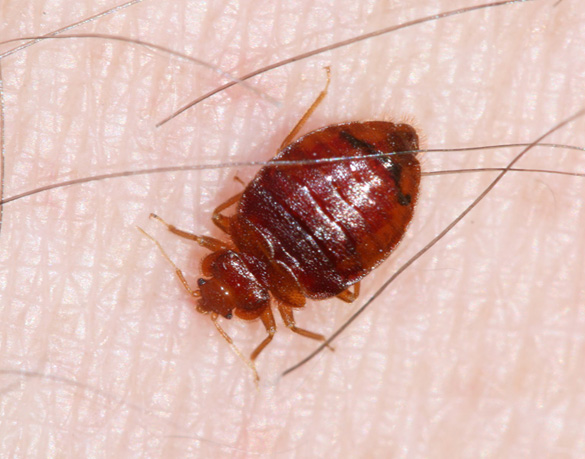Finest Kings Pest Control Cincinnati: Top-Rated Exterminators
Types of Insect Control: Which Technique Is Right for Your Problem?
When confronted with an insect problem, the option of a suitable technique for insect control is critical in efficiently managing the situation. From chemical treatments to biological solutions, there exists a series of techniques that can be used to attend to various types of insects. Each technique comes with its own collection of benefits and factors to consider, making the decision-making procedure a nuanced one. Recognizing the subtleties of each method and evaluating their compatibility with the particular bug invasion available is essential for attaining long-lasting success in parasite management. By exploring the different sorts of parasite control approaches available, individuals can make informed decisions tailored to their unique conditions, making sure a much more reliable and lasting end result in insect removal.
Chemical Bug Control
Chemical parasite control includes using artificial or naturally acquired chemicals to manage and eradicate pest populaces properly. This method is commonly used in agriculture, forestry, and property setups to deal with a broad variety of insects, consisting of pests, rats, and weeds. The usage of chemical pesticides can give fast and targeted solutions to pest invasions, making it a popular option for many individuals and companies.
Among the key benefits of chemical insect control is its ability to promptly remove pests, lowering the danger of damage to crops, residential or commercial property, and human wellness. By making use of details chemicals that target certain insects, this method can properly manage problems while reducing damage to beneficial microorganisms and the setting when used properly.
However, using chemical pest control additionally elevates concerns concerning possible damaging effects on non-target types, water sources, and human wellness. It is essential to follow safety standards, use chemicals sensibly, and consider alternative parasite control approaches to minimize these dangers and ensure sustainable parasite management methods.
Biological Bug Control
Biological parasite control, also known as biocontrol, makes use of living microorganisms to handle and decrease pest populations naturally. By utilizing the bug's natural killers or microorganisms, biological pest control supplies a eco friendly and lasting option to pest monitoring.

Mechanical Insect Control
Using physical and manual methods to manage parasite populaces, mechanical bug control uses an alternative technique that does not depend on the use of living microorganisms or synthetic chemicals. This approach entails making use of obstacles, catches, or various other tools to literally hinder or remove pests. By obstructing pest entrance points or establishing catches to capture them, mechanical pest control can properly minimize problems without introducing chemicals into the environment.
One usual instance of mechanical bug control is the use of mesh displays on doors and windows to stop bugs from going into structures. This easy yet reliable method acts as a physical obstacle, maintaining parasites out while enabling correct air flow. Furthermore, tools like mousetraps, fly swatters, and ultrasonic repellents drop under the mechanical insect control group.
While mechanical pest control approaches can be labor-intensive and need normal tracking and maintenance, they use a lasting and ecologically pleasant remedy for managing parasite problems. By combining different mechanical strategies, homeowner can develop a thorough bug control approach that decreases dependence on chemical pesticides.
Physical Bug Control

Some typical physical pest control methods include the use of obstacles such as webs or displays to avoid bug entry, catches to capture and remove parasites, and hand-picking to physically get rid of parasites from plants or structures. In addition, techniques like heat treatments can be utilized to control insects like bed bugs by elevating the temperature level to degrees that are deadly to the bugs.
Physical parasite control is especially beneficial in incorporated insect administration (IPM) strategies, where numerous read more bug control approaches are integrated for reliable insect management while reducing making use of chemicals. By using physical pest control strategies, individuals can properly resolve parasite invasions with marginal ecological influence.
Integrated Insect Administration
When executing physical insect control techniques as component of insect monitoring methods, Integrated Insect Administration (IPM) arises as a detailed strategy that leverages numerous methods to efficiently control pest populations. IPM concentrates on long-lasting prevention of pests with a combination of organic, cultural, physical, and chemical tools customized to particular bug problems. By incorporating several control tactics, IPM intends to minimize the dangers associated with parasites while additionally reducing reliance on chemical remedies.
One trick aspect of IPM is the emphasis on surveillance and assessing pest populations to establish one of the click for info most suitable control Look At This methods. This positive approach enables early intervention and targeted techniques, bring about much more efficient parasite management. Additionally, IPM advertises ecologically friendly methods by focusing on non-chemical control approaches and only utilizing pesticides as a last hope.
Final Thought

By using the insect's all-natural predators or pathogens, organic insect control supplies a environmentally pleasant and lasting remedy to pest management. - Kings cincinnati pest control companies
Making use of hands-on and physical techniques to handle insect populaces, mechanical parasite control uses a different technique that does not rely on the usage of living microorganisms or artificial chemicals.A reliable strategy to managing parasite populations without depending on chemical or biological methods entails the use of physical pest control strategies.When applying physical insect control methods as component of bug management strategies, Integrated Pest Monitoring (IPM) emerges as a comprehensive technique that leverages different strategies to properly manage pest populations. Chemical parasite control involves the use of chemicals, biological pest control utilizes natural predators, mechanical insect control includes physical obstacles, physical insect control consists of trapping or getting rid of bugs, and integrated bug management incorporates multiple methods for a holistic approach to pest control.